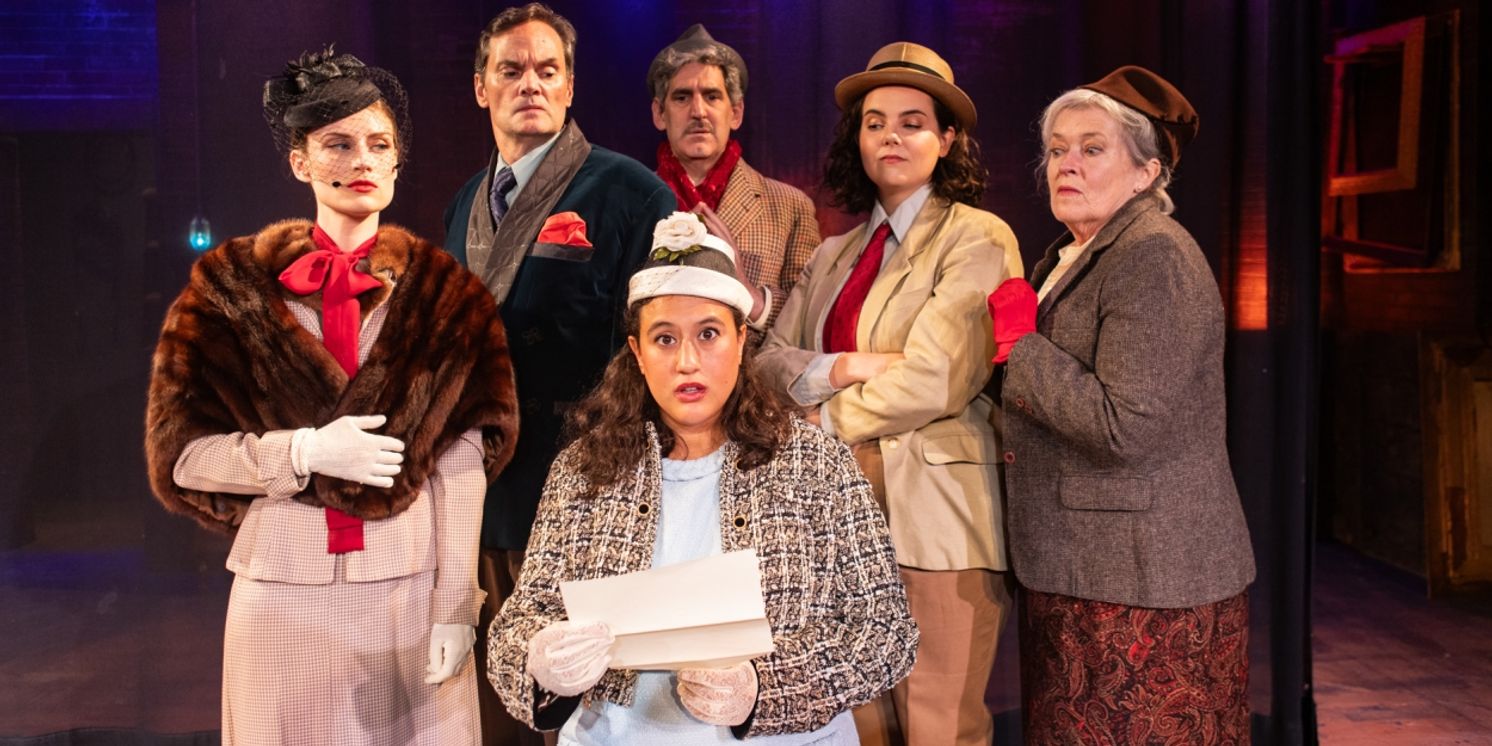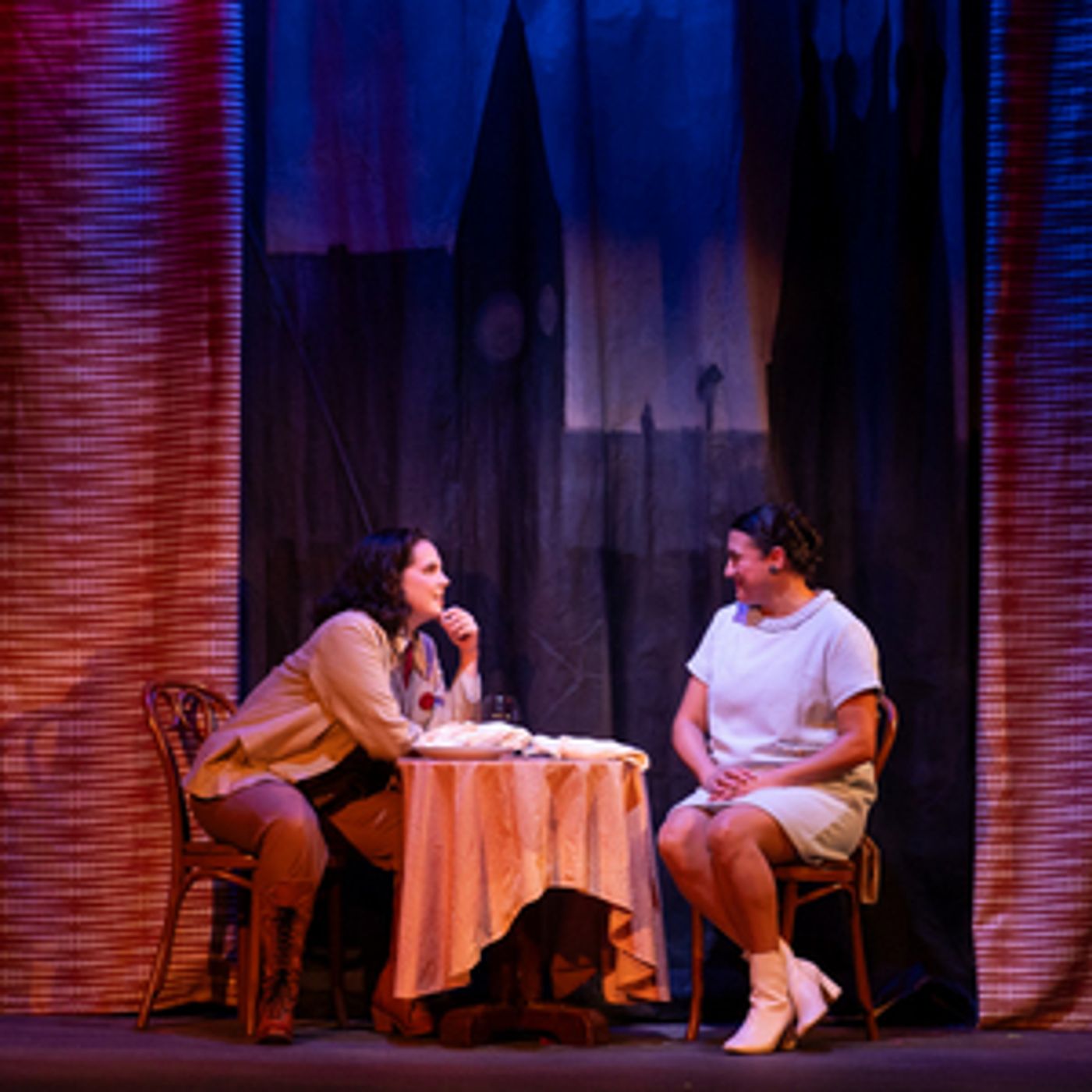Review: AGATHA CHRISTIE'S GO BACK FOR MURDER at The Barnstormers Theatre
Whodunnit at its best

 Agatha Christie's “Go Back for Murder” is more than just a whodunit. It's a psychological exploration of memory, guilt, and the blurred lines between truth and perception currently playing at the Barnstormers Theatre in its historic venue in Tamworth.
Agatha Christie's “Go Back for Murder” is more than just a whodunit. It's a psychological exploration of memory, guilt, and the blurred lines between truth and perception currently playing at the Barnstormers Theatre in its historic venue in Tamworth.
The play is set in locations around London in the 1960s and a sprawling manor 15 years prior. There’s no better place for a Christie crime to take place but in a British countryside.
Based on a detective novel published in 1942, “Five Little Piggies,” the original story has the expert crime solver, Hercule Poirot, as the detective in the story. When it was turned into a stage play, Poirot’s character was eliminated.
Without Poirot, the play is a reversal of the traditional detective story. Instead of a the typical sleuth unraveling the mystery, it's a woman, Carla Crale (Emily Bosco), who is determined to prove her mother's innocence after being found guilty to having murdered her father, Amyas Crale, an artist (Tom Schwans) Armed with a letter sent from her dying mother in prison Caroline proclaiming her innocence, Carla gathers the original witnesses to the crime and brings them back to the scene 15 years earlier. She is helped by a present-day solicitor, Justin Fogg (Ryan Halsaver) who witnessed the trial as a youth when his father was the original court room prosecutor. He agrees to help Carla in her pursuit of her mother’s innocence.
The first act is spent with Carla interviewing the suspects at present while the second act is a recreation of the events that lead up to the murder.
Be warned that the first act is a bit long and tedious as it sets up the exposition needed to produce the second act. You need to pay attention to every detail, or something will be missed. (Might the cast speed up the pace and turn up the volume by about 10-20%) Fortunately, the second act is well worth the wait with more animated action and the time travel resolution of the crime.
As the characters relive the past, the play delves into the psychological impact of the crime on its survivors. Characters are haunted by their past actions and the consequences of their choices.
There’s Philip Blake (Bill Mootos), a stuffy stockbroker who once proposed to Caroline but was snubbed and forever scarred and his emotional brother, a reclusive amateur herbalist, Meredith (Doug Shapiro) who had a special fondness for Caroline as well.
The Governess, Miss Williams (Penny Purcell) is sure of Caroline’s guilt in the murder having claimed to see something that nobody else witnessed. She is a surrogate mother of sorts to Caroline’s half-sister, Angela Warren (Allison Beauregard) who was an emotionally enraged child mostly due to a combative moment with her sister that left a gruesome scar on her face forever.
Much of the play centers on the story of Lady Elsa Melksham (Harley Seger), a blonde-haired beauty who met and fell in love with Amyas as he was painting her portrait. She believed that he would divorce Caroline and marry her after the painting was complete. Amyas is conflicted as he struggles to share that truth with wife Caroline.
The first act was brilliantly played with a series of present-day interviews of the suspects. Rather than complicated set changes, locations were seamlessly transitioned with curtains drawn from center stage, splitting the stage in two. It was perfectly executed and made the second act staging more amazing as the stage became a sprawling countryside manor. Well played, scenic designer, Emily Nichols!
Costumes were a bit puzzling with the time period in the program noting 1960s and 15 years prior. They were an odd mix of the period 60s gaudy and other undefined eras. It wasn’t until I did an online search to discover that the action takes place in 1960 with the flashback going to 1945. This made the costume plan a bit more understandable.
The cast delivered strong performances across the board.
Bosco and Halsaver kick off the production with great interaction that sets up the premise of the entire show. They are skilled story tellers.
Bosco plays the detective role wonderfully as she interrogates the unlikely brothers, Philip and Meredith who are perfectly cast as Mootos portrays the stiff Brit and Shapiro relishes in another of his mildly eccentric characters that he tends to do with the Barnstormers. Bosco is convincing as she plays the daughter role, but she’s especially engaging as she portrays her mother.
As Governess, Purcell, is charming motherly to Beauregard’s hyperactive portrayals.
Schwans is the perfect murder victim; appropriately obnoxious, irritable, demeaning, and pompous in his own right. Schwans takes on the role with a nuanced flair.
Seger adeptly portrays both time periods for her character as the young beauty in a sporty athletic outfit for the portrait shoot and as a hardly aging older version of herself still with the blonde hair and a hardened demeanor.
There are two minor characters that simply add flavor to the mystery in Carla’s current day fiancée, Jeff Rogers (Paul Melendy), a last-minute understudy playing a doltish Texan and an ever so dutiful administrative aide, Turnball (Dana Place).
To do an Agatha Christie play well, the director needs to have a clear vision of how the actors and characters interplay with the set, costumes, and staging resulting in a perfect tone for the production. Director, Jordan Reeves, has that vision and Barnstormers audiences will love this production.
Like any Agatha Christie play, there are twists and turns that keep you engaged and always wondering. Crime is inevitable, usually a murder, and the weapon, often, is some kind of poison. (Hardly a spoiler alert considering that when asked about her favorite murder devices for her stories, Christie explained that she was a nurse during World War I and worked regularly with some 90 medications that could prove fatal depending on the use and dosage.)
As for the play’s ending, the murder is solved, followed by a quick story ending designed to wrap things up nicely. But in true Agatha Christie style, there are still many unanswered questions that audiences will ponder as they exit the theater.
Reader Reviews
Videos

